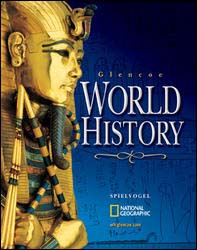Glencoe World HistoryChapter 22:
East Asia Under Challenge, 1800–1914Chapter OverviewsAfter a century of Western influence, internal and external forces in China brought down the Qing dynasty and led to civil war. The shogunate opened Japan to the West, only to be overthrown. The Meiji Restoration brought reform and industrialization as well as Japanese imperialism. Section 1 The Decline of the Qing Dynasty
Rapid population growth, food shortages, peasant unrest, and corruption and incompetence all contributed to the decline of the Qing dynasty. The Empress Dowager Ci Xi ordered the emperor executed and blocked reform efforts. Mounting external pressures only weakened China's ability to address its internal problems. Japan, Russia, and other nations laid claim to Chinese territories. When rebellions in China threatened Western interests, Western nations responded with military force. They also challenged Chinese sovereignty by establishing spheres of influence inside the country. To stabilize relations among the Western nations, the United States declared an Open Door Policy. This gave all Western nations equal trading privileges in China. Section 2 Revolution in China
After the Boxer Rebellion, Empress Dowager Ci Xi embraced some reforms. However, an emerging new elite was impatient with the slow pace of change. Meanwhile, increased taxes led to further unrest in the countryside. A young radical named Sun Yat-sen called for a military takeover and the replacement of the Qing dynasty by Sun's Revolutionary Alliance party as preparation for democratic rule. After the death of the empress, Sun's party launched an uprising and installed a military general as president. However, the old political and social order remained entrenched, and China soon lapsed into civil war. The presence of Europeans in China during the nineteenth century had brought changes to the Chinese economy. Cultural changes followed, particularly in China's cities. China was flooded with Western books, paintings, music, and ideas. Intellectuals often displayed contempt for the Chinese past and advocated a new culture based on the Western model. Section 3 Rise of Modern Japan
Under military pressure, Japan agreed to establish diplomatic ties with the United States. Similar treaties followed with other Western nations. Samurai warriors responded by forcing the shogun from power. The Meiji Restoration ended the shogunate and restored the emperor as a figurehead. Under a new constitution, most power was in the hands of the executive branch. Meiji reformers transformed land ownership, tax laws, the military, and the education system. Aristocratic privilege was abolished, women gained new rights, and Japanese took jobs in industry. However, industrial working conditions were often deplorable. Pressure built for an expansion of political rights, including women suffrage. Japan, meanwhile, expanded its territory much as the Western industrial nations had done. This led to wars with China and Russia in which Japan took control of Korea and Sakhalin. Relations with the United States were marked by mutual suspicion.  | 

















